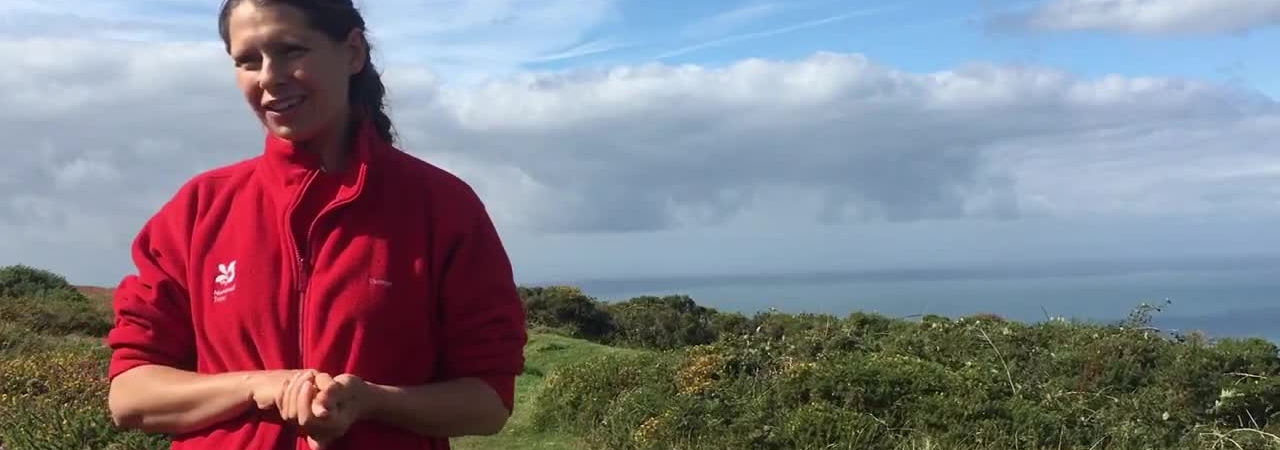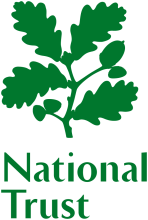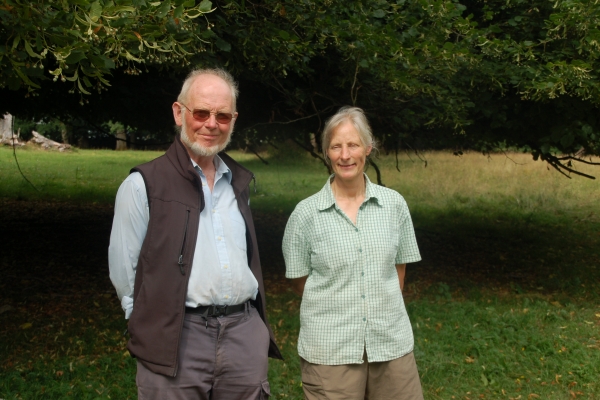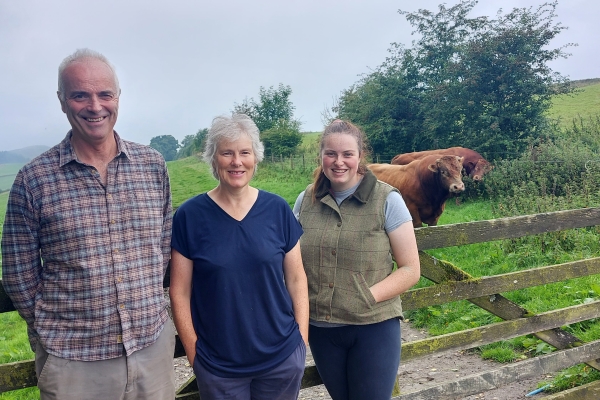Josey Field
Kipscombe Farm, Lynmouth, Devon
Kipscombe Farm is part of West Exmoor National Trust; some 3,500 acres of woodland, heathland, and enclosed pasture, of which the farm makes up 880 acres. Historically, Kipscombe has been farmed by a tenant, however, in March 2017 the most recent tenant left, and a decision was taken to manage the farm ‘in-hand’ for at least the next 3 years. My team and I have facilitated putting the wheels of holistic management into motion at Kipscombe Farm. I’m a lady of many hats; part ranger, part project manager, part farm manager, part visitor and volunteering facilitator for the project, and many other things in-between.
The habitats at Kipscombe comprise of enclosed (semi-improved acid) pasture, dry acid heathland (Site of Special Scientific Interest), and some wooded combes. Previously the land had been over-grazed by sheep, cattle, and Exmoor Ponies, ploughed for arable crops, and had root crops grown in it. Currently we graze Exmoor Ponies, and Longhorn Cattle here.
The area is home to many rare species of bird, is internally important for its waxcaps, and was once home to the now devastatingly rare High Brown Fritillary Butterfly. However, due to centuries of farming use, the soils are drastically thin, and there is a distinct lack of trees (which would once have been common as wood pasture).
Kipscombe Farm is part of Exmoor National Park, and consequently there is a tendency to believe that wildlife is thriving, and the ecology is balanced here. However, we must recognise that our National Parks are also in decline; threatened by climate change, overuse, and habitat monoculture. The erosion of nature is happening here too, just perhaps a little slower, or a little less noticeably than in other places. As such, our vision for the farm is to dramatically improve its wildlife value; through the planting of more trees, and implementing a financially sustainable low-input farming system. Our aim is to deeply inter-connect conservation and farming, so that one is supportive of the other.
When we took the farm back in-hand in 2017, we bought 250 (mainly Welsh Mountain) sheep, and 35 Exmoor ponies from the out-going tenant. At this time there were no cattle on the farm, but we all knew this was something that had to change. After reviewing our soil, vegetation, climate, topography, and taking some expert advice, the team decided the best way to knit farming and conservation together would be by implementing a holistic grazing system within wood pasture.
The cattle are integral to this system for the following reasons:
- We needed animals that would be happy grazing in long grass; we intended to reduce stocking numbers and allow fields to ‘rest’ for longer
- We needed animals that would be heavy enough to trample uneaten grass into the soil; which will improve the condition and resilience of our soils
- We needed animals whose hooves would create small bare niches in the soil; thus allowing more delicate species of flora to penetrate through the coarser grasses
- We needed animals who had co-evolved with pasture for centuries, and thus had gut bacteria adapted to work in harmony with that of the soil; again to improve the condition and resilience of our soil
- We needed animals who would offer a superior meat quality and quota; to make the farm financially sustainable.
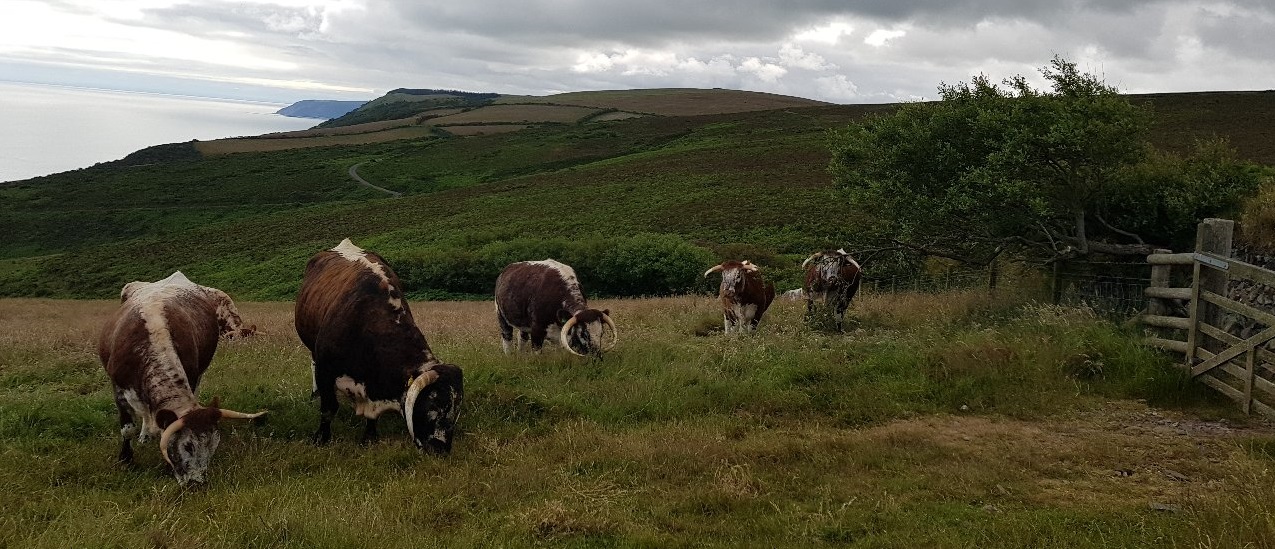
Once the decision was made to have cattle at Kipscombe, we then had to decide which breed of cattle would be suitable. On a team learning trip to Wales, we stumbled across Bernard Llewellyn’s herd of English Long Horns at Carreg Cennen in Carmarthenshire. Their large ancient forms stuck with us, and increasingly the team revisited the notion of developing a herd of English Long Horns. We chose English Long Horns for several reasons:
- They are a heritage breed, who are hardy and would cope with being over-wintered outside in our low-input system
- They are easy calving outside
- They are of an easy temperament if well handled
- They produce a superior meat quality, that can be sold at a premium
- They are amazingly charismatic, which would help us to open conversations with the public about the breed, our conservation work, and our farming
It seemed Long Horns had won us over, but it took a long time to find cattle that would be right for us. We needed animals that were born in regions facing similar challenges – in terms of climate, animal parasites and diseases, and topography. We didn’t want to lose any cows that weren’t used to the conditions of their new home. Finally by May 2018, and after a lot of research, we had a herd of 37 on-site, mainly all brought from breeders in Wales. The cattle have settled into their new home nicely. Fast forward to 2019 and we now have 58 cattle on-site and look forward to our first calving in 2020.

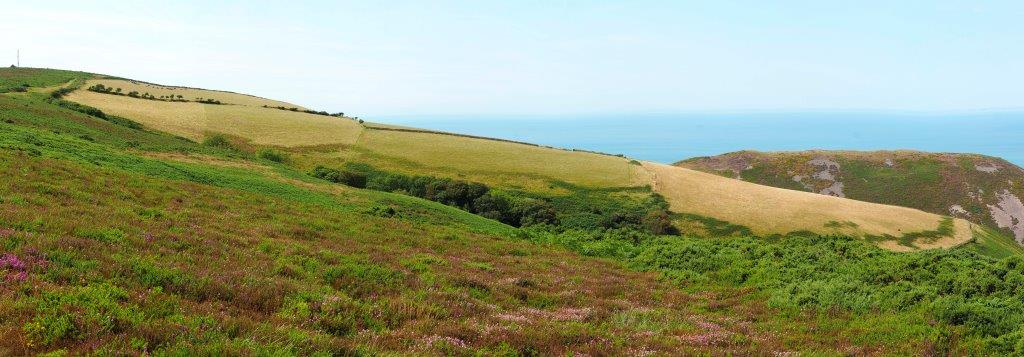
Sustainability in practice
Beneath our feet: soil health
Improving the health of the soil at Kipscombe Farm is central to our vision. If our soil is well maintained, our plants will grow well, and in turn provide nutritious food for our animals and wildlife, shade and protect the soil, store lots of carbon, and provide homes for more small mammals and invertebrates.
To understand how to improve and manage the soil health at Kipscombe, we undertook both standard and more specific farm soil surveys across all fields on the farm. These indicated although our soil health was moderately healthy, it could be so much more abundant and productive. From an observational point of view, we had also noticed puddling at the bottom of some fields during and after winter; an indicator that the soil was not able to process water as efficiently as it could or should.
Because of surveying and observations, it became apparent that our sward is shallow rooting – meaning plants won’t benefit from nutrients held in all levels of the soil, or from moisture locked deep in the soil. The roots will not aerate the soil efficiently, we have compaction issues (in places you can’t dig more than 120mm before hitting a very hard stony layer), the soil is probably lacking in glomalin (or soil glue – which helps to bind carbon into the soil) and does not readily stick to the plant roots, and there are very few earth worms – meaning less aerated soil and organic matter is less readily decomposed.
Consequently, to combat our soil situation, we are implementing a holistic grazing system. We have tried as much as possible to consider the farm as a whole, taking into consideration a number of details, which include:
- Where water runs across the farm
- Where we can easily rotationally graze animals and where we will have to graze them more extensively (mainly due to topography)
- Where the deer graze and where we will have to protect any trees we plant
- Where we plant trees and where we widen or reinstate old hedgerows
- Which species of tree to plant (given climate change and flowering times)
- Which vehicles we use to drive across the fields (we try to limit this as much as possible)
We hope that by rotationally grazing cattle, planting trees, and limiting vehicle access onto the site, we will improve the soil’s organic matter content, increase the fungi present in the soil, shelter the soil, and reduce any compaction issues. In combination with our tree planting, the cattle will also help dramatically improve our soil health. This isn’t a quick fix, but hopefully in time, with some determination, and consistent surveying we will be begin to see some positive changes.
Why wood pasture?
Along with improved soil condition and grazing herbivores, planting wood pasture and allowing trees to pioneer away from our wooded combes is integral to the Kipscombe vision. Trees are the lungs of our world and were much more abundant in our landscapes in days gone by than they are now. According to the Franz Vera model, habitats did not climax but worked through a cycle of scrub, pioneer wood, closed canopy woodland and wood pasture (created by grazing herbivores and decaying trees) before returning to scrub again.
This is a brilliant symbiosis; trees recycle carbon dioxide and store carbon in their woody mass. Their leaves provide organic matter for the soil and their roots work in symbiosis with fungi to exchange minerals, water and sugars. Their form directs water down into the earth and their roots break up and aerate the soil. When planted on slopes, they help hold the soil together and reduce run-off and erosion, and they provide food and shelter for wildlife and larger herbivores. Our tree planting hasn’t begun yet – I often feel sorry for our cattle when I see them all hunkered under one gorse bush trying to shelter from the wind. Consequently, we feel that it is vitally important to improve the tree cover on the farm. Our planting plan includes clusters of trees ‘in-field’ and expanding existing hedgerows. This plan has evolved taking into account a system that will work better for us if we have more flexibility within our grazing. Therefore, instead of planting rows of trees to separate our fields and demarcate our grazing paddocks, mobile electric fencing will be used to split the fields as we move the cattle around the farm. This will be a much more flexible system that will allow us to plant sympathetically within the landscape, and tailor our grazing to the yearly grass growth. Some years we may even leave areas un-grazed.
The videos below show footage of Josey filmed at a FWAGSW Open Day (funded by the Exmoor Coastal Streams Facilitation Fund the Pasture for Life Exmoor Discussion Group). She talks about the plans for holistic rotational grazing within a silvopasture system (including shelter belts and extensive grazing blocks), and refers to the planting of blocks of trees and species selection. You can also watch footage of Rob Woolton from Devon Hedge Group that was filmed on the same day. Rob uses Kipscombe Farm to explain the multifunctional role of hedges, the benefits and practicalities of hedgerow coppicing, and some other practical elements of hedgerow management.
Motivations
My background is mixed, I have a military medal for service to my country, a PhD, and most recently completed the National Trust’s Academy Ranger program. I am here, working on the Kipscombe project because I believe that we, humans, have broken nature. We are well past the tipping point and running out of time to readdress the natural balance; eventually we will be the ones who suffer for our neglect. However, I am also an eternal optimist, believing there is still time to address the balance by being bold, making changes where we can, and inspiring others to do the same. It’s time to think and act big.
However, it’s not just me here working on the project. I am lucky enough to have one of the best teams in contemporary conservation supporting me. None of what we do on the farm would be possible without our superb stockman, Andrew Leworthy, my visionary boss, Kev Davies, and our supportive ‘big-boss’ Rob Joules. Not to mention the rest of the West Exmoor Ranger Team and our group of volunteers, who provide on-going support and encouragement.
Photo credits: Bob Blincow (All Rights Reserved)
